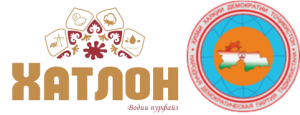Khuroson
12.KHUROSON – AFTER TEN THOUSAND YEARS
A brief historical information. Khuroson district has an ancient history. “The most ancient monuments of the Bronze Age, which have been discovered in the South and Center of Tajikistan, the instruments made from the brass and bronze (as well as, the brass axe) are the evidence of the above-mentioned words. One of these monuments is an axe, that has been found in Yori village of Panjakent district, another one in Shar-shar village of Kuybishev district (now Abdurahmoni Jomi district) and the third one has been found near the Archin village of Varzob district. “The history of all of those acquisitions has been considered the end of millennium, XI century BC”. It means, that the former history of Khuroson district has a root in the ancient time. From the geographical point of view, Khuroson (Ghozimalik) has been started from the coast of Kofarnihon river and reached the foot of Panj river. There are four mountains in its territory, headed to the sky: Qaratogh, Goktohg, Ariqtogh, and the mountain behind the mountain Qarintogh. One part of the mountain ranges of Bobotogh includes the full portion of Aqtogh and another part includes the half portion of Rangkuh.
Khuroson after the victory of the October Revolution and the victory of the Western Bukhara revolution, only in 1925 had been known as a separate entity. Previously, Khuroson district, which has been located at the right side of Vakhsh river, it has been existed as a separate administrative unit between the two largest areas Khatlon and Chaghoniyon (Hisor).
From 1936 to 1959, the present Khuroson district has been named Dahanakiik. In March 1959, Danakiik district has been joined to Kuibishev district (currently Abdurahmoni Jomi). In April 1983, Khuroson district has been separated from Kuibishev district and has been named after Ilich. There was a time — since March 1992 the district has been given the name of Ghozimalik and finally by the decision of Majlisi milli of Majlisi Oli of the Republic of Tajikistan, on February 12, 2004 there has been given the name of Khuroson to Ghozimalik district, under the registration # 503. The district area consists of 896.1square kilometer. Its center is Obikiik, located about 45 kilometer far from Dushanbe city and 40 kilometer far from Bokhtar city.
There mainly Tajiks, Uzbeks, and some families of Tatars, Russian, Koreans, Kyrgyzes and the representatives of other ethnic groups live in the district.
Attractive travelling areas. The historical and cultural heritages of Qal’ai surkh (Qizilqal’a in Turkish language) are located within the territories of Halqajar, Sarband and Hayoti nav of village council named after Sadriddin Ayni and Qizilqal’a. Qal’ai surkh (Qizilqal’a) has a level of the republican museum and has been registered in the Catalogue of the preservation of historical and cultural heritages of the Republic of Tajikistan. There is a little sign, has come to our days from that above-mentioned antique castle. The archaeologists have found various types of golden jewelry and embellishment, golden coins, big and small jugs and pots, that belong to Khurasan domination in Halqadar, Sarband and Hayoti nav villages from the hills, where Qal’ai Surkh is located there.
Historical – architectural monuments, which had been built in the former Soviet Union, have been preserved till today. Such as: the two monuments of the Leader of Proletariat Vladimir Lenin, that one of them is in cultural – amusement park and the other one is in the village council named after Sadriddini Ayni and a memorial plague “Jangovaroni Bashardust” (The Humanist Warriors) (in 1979-1987), which also is located in the cultural-amusement park of the district. As well as, the statue of “Askari Jangovar” (The Warrior Soldier) (1941-1945), at the secondary school # 1, the statue of “Woman and Man with the stars”, the stone made memorial of Jabbor Rasulov are located in the village council of Fakhrobod. In addition to them, “Vakhsh valley” is located at the entrance of Khuroson town of the village council named after S. Ayni and it should be reminded, that the memorial monuments are located within the rural communities.
Within the district territory, there are saint places such as Ta’ba Tobiin” in Tobashar village, “Zokirjon” in Dahana village of Ghallaobod village council, “Gulchechak”, in Qal’ai Surkh village council, “Khojabekhob” and “Khoja Ganjina” in the village council named after S. Ayni, “Khojazarrin” and “Yormachit” (till the Islamic Revolutionary here was Zoroastrianism sanctuary and after the victory of Arab army, it was converted into mosque ) are located in Fakhrobod village council and because of the confession and also recovery from the diseases, people of the district and outside of it come on pilgrim to these places. The historical monuments are in a normal state, by the support of the rural residents they are repaired regularly and the visited tourists get much moral impressions out of them.
Infrastructure service. The district has the terminal of passengers, hotel, market and shops, the building of cultural and social services and other necessary and favorable conditions.
Folk craftsmanship and skills. The district people is mostly engaged in folk crafts, such as timbering, embroidery, needlework, fancywork, stitching, socks-knitting, carpet-knitting and cooking national cuisines, baking bread and rolls and as well as stock-raising and poultry.
The particularities of the district. There is an only Zoroastrian sanctuary has been remained in Khuroson district, that presently by the name of Yormachit, it has been converted into the mosque. It should be noted, that there is a large resource of lime in the district territory and because of its best quality, it is called Khuroson Lime. The large mines of the lime can supply the country with the high quality lime for centuries.
Search
Archives
